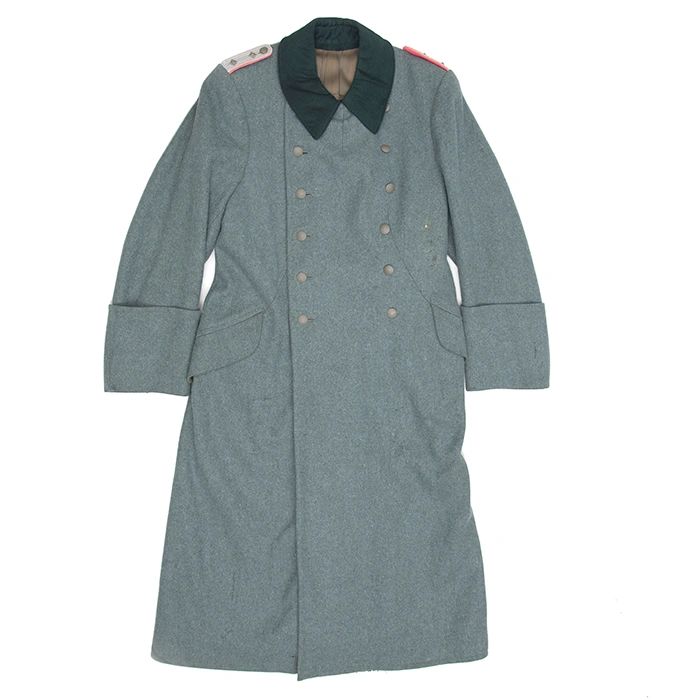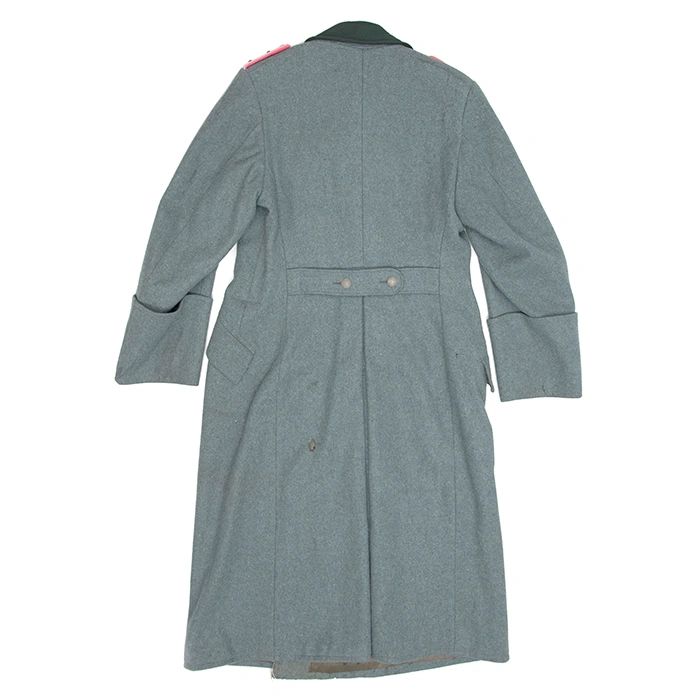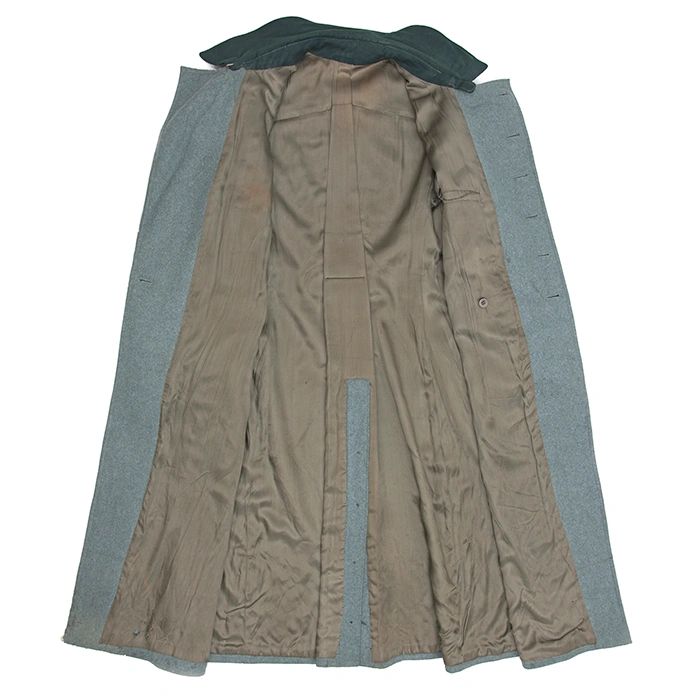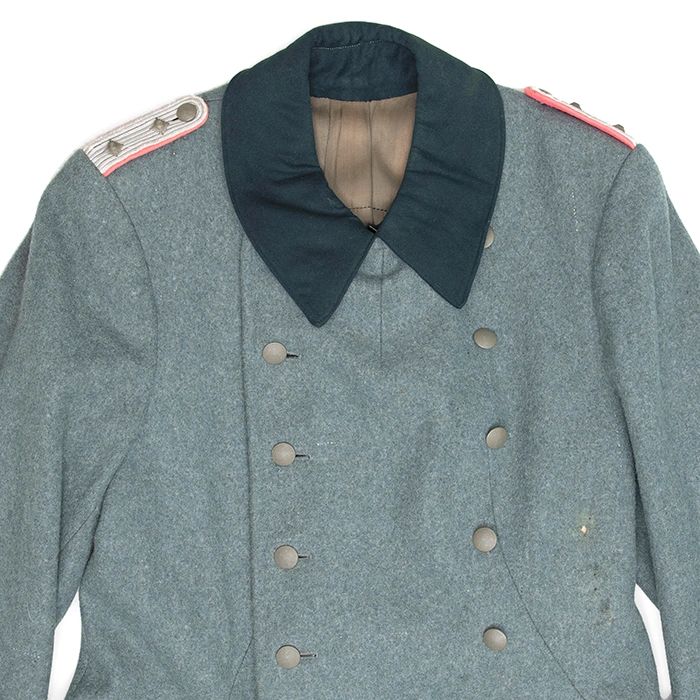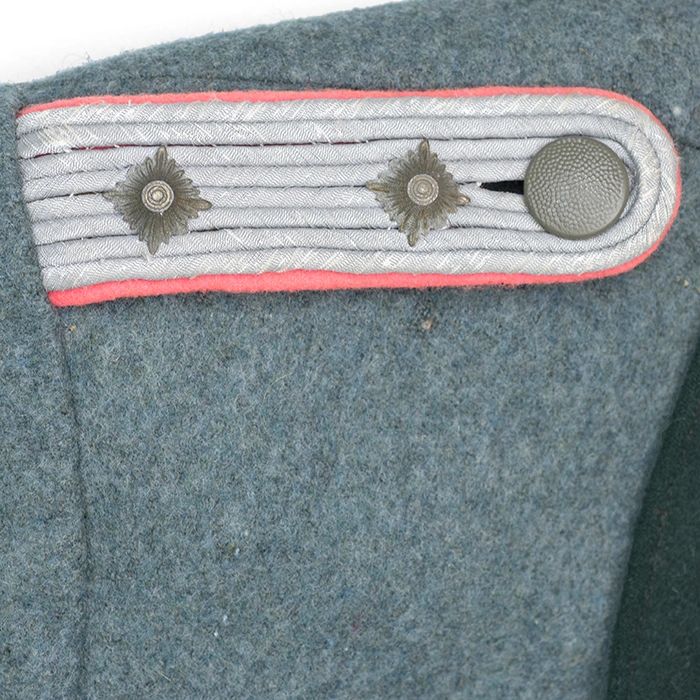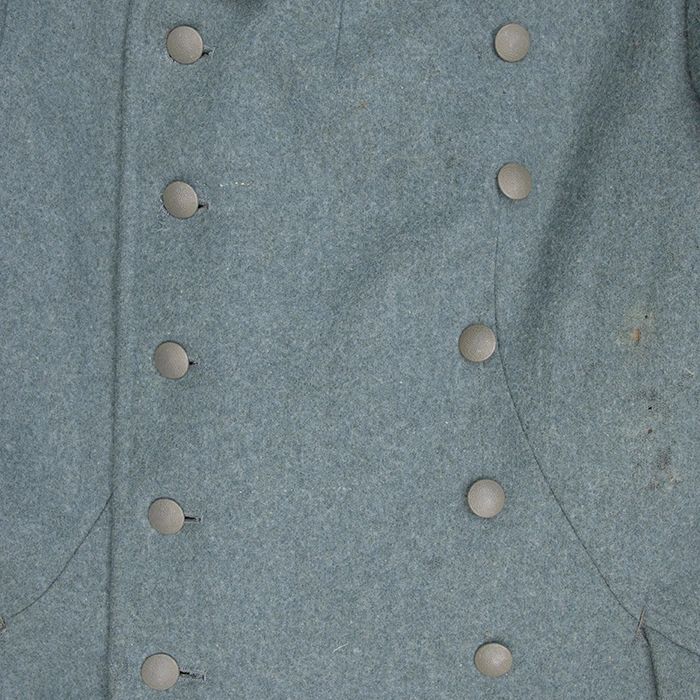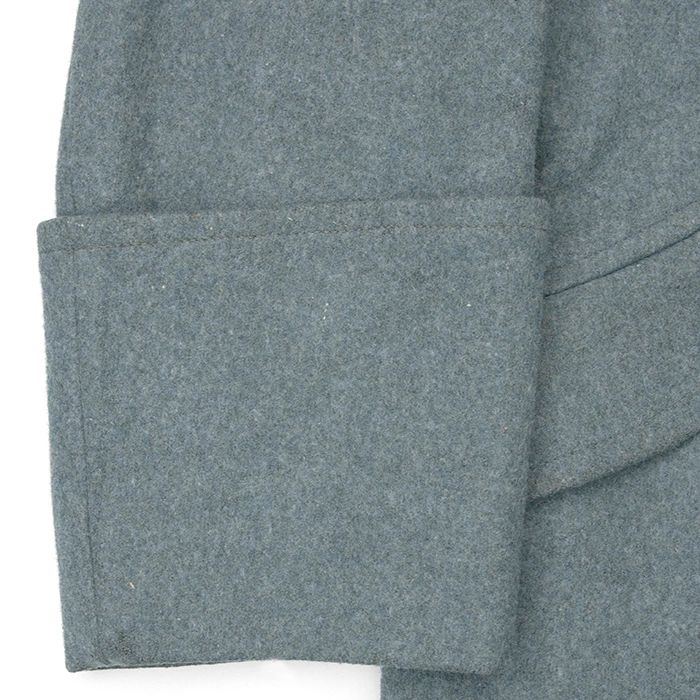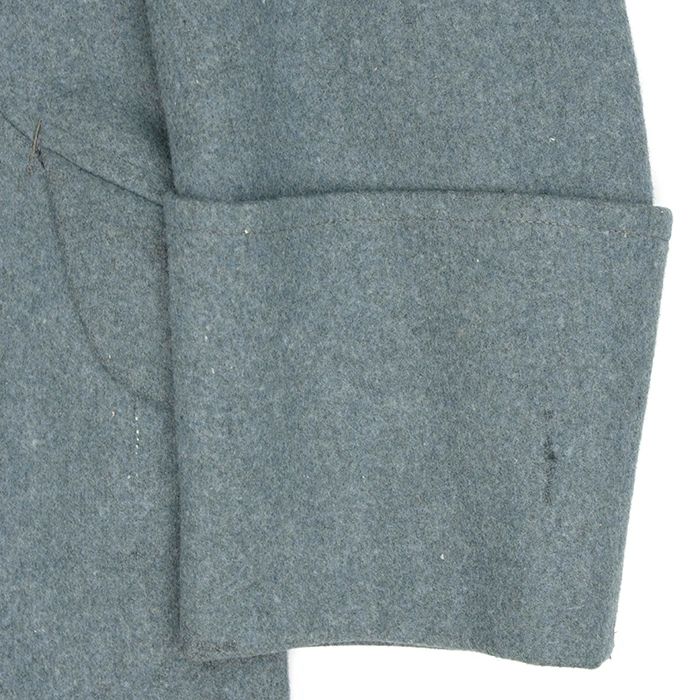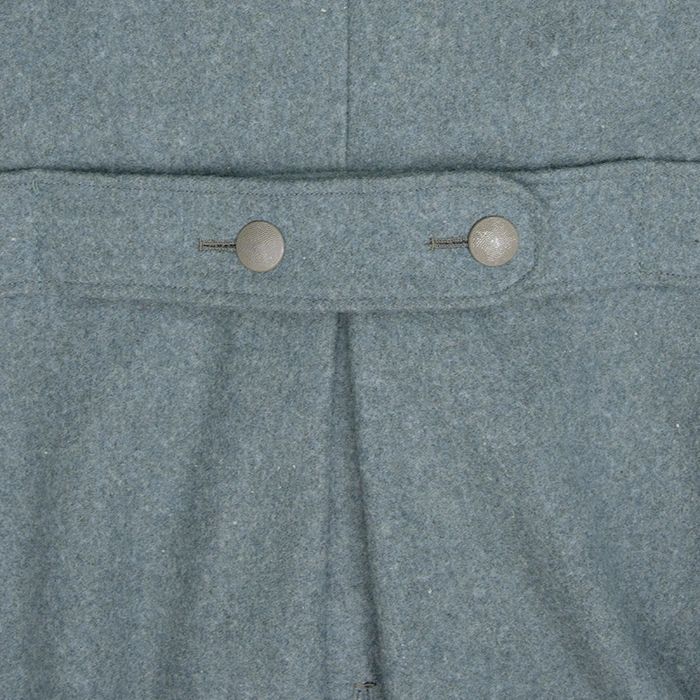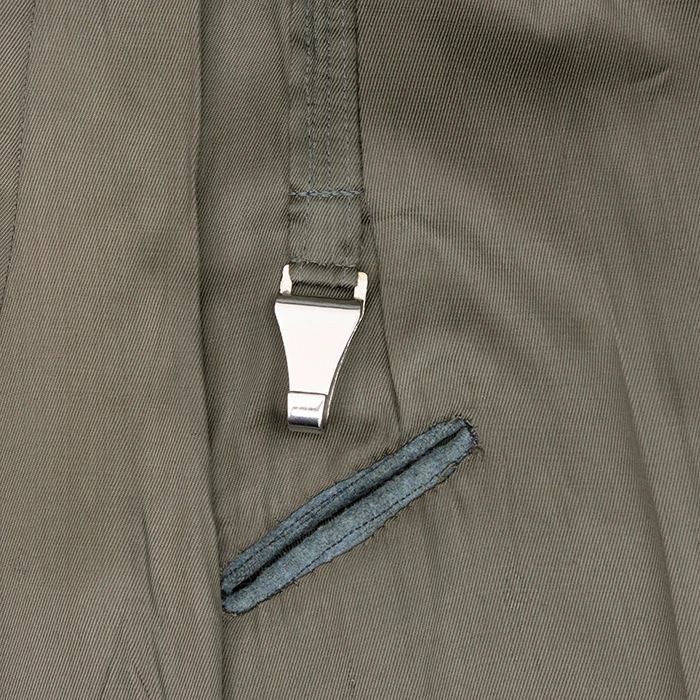Description
Here is your chance to pick up a very nice Heer Panzer Hauptmann overcoat. This is a tailor made example constructed of a field grey colored wool similar to issue quality, having a large dark green badge cloth collar fastened with a large black painted steel hook and eye, with double breasted front closure, two flapped hip pockets, deep turn back cuffs, rear waist belt and vented rear skirt, lined in dark grey colored rayon and with one internal breast pocket, having provision for wear with a dagger. The painted pebbled steel buttons match and are originally sewn. The sewn in Hauptmann rank shoulder boards are held with smaller pebbled buttons, each board has two small zinc rank pips, the skirt is hemmed. The coat does not show much wear per se but has suffered from insect damage, specifically there are areas of tracking and moth holes to the middle chest, and to the hidden upper chest (concealed when the coat is buttoned). The right lower skirt (also hidden when buttoned) has the same kind of damage and sections of the white underlying facing materials are revealed, there are a few smaller scattered holes to the body and there is a hole measuring 2x3cm to the rear skirt, displays reasonably and has originally applied shoulder boards. CLICK HERE to view more images of this pair! The Heer was the land forces component of the Wehrmacht, the regular German Armed Forces, from 1935 until it ceased to exist in 1945 and then formally dissolved in August 1946. During World War II, a total of about 13.6 million soldiers served in the German Army. Germany’s army personnel were made up of volunteers and conscripts. Only 17 months after Adolf Hitler announced publicly the German rearmament program, the Army reached its projected goal of 36 divisions. During the autumn of 1937, two more corps were formed. In 1938 four additional corps were formed with the inclusion of the five divisions of the Austrian Army after the Anschluss in March. During the period of its expansion under Hitler, the German Army continued to develop concepts pioneered during World War I, combining ground (Army) and air (Luftwaffe) assets into combined arms forces. The German military managed quick victories in the two initial years of World War II, a new style of warfare described as Blitzkrieg for its speed and destructive power. Free shipping ANYWHERE IN THE WORLD & I don’t charge PayPal fees like some of the other guys!
